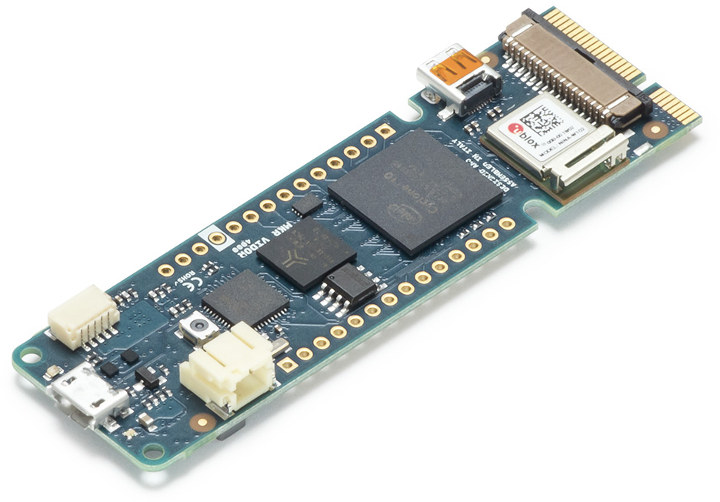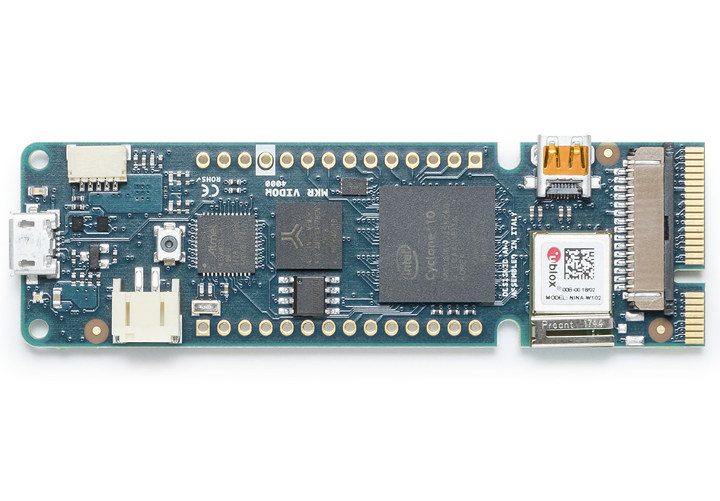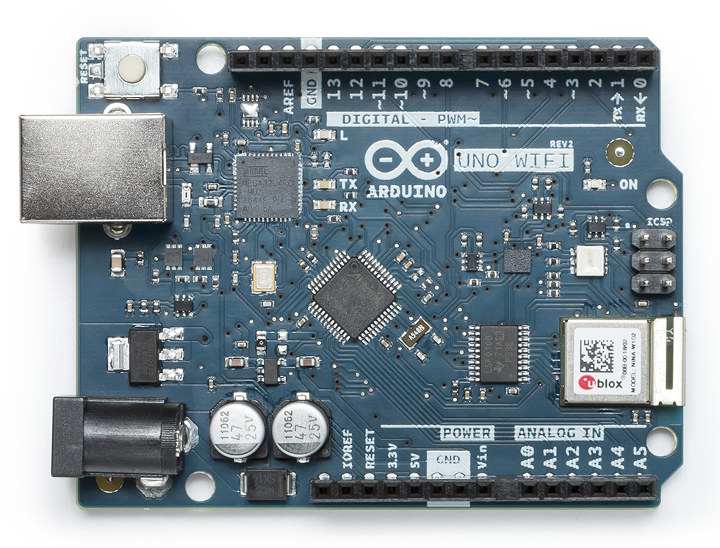Arduino has been busy with new boards announcements in the last week, as after introducing MKR WiFi 1010 and MKR NB 1500 IoT boards with respectively WiFi + Bluetooth, and NB-IoT + eMTC connectivity, the company has now unveiled two new boards.
MKR Vidor 4000 is the very first official Arduino board with an FPGA, while UNO WiFi Rev2 is an upgrade of UNO WiFi board featuring the new Microchip ATmega4809 MCU and an U-blox wireless module instead of an ESP8266 chip.
MKR Vidor 4000

Preliminary specifications:
- FPGA part
- FPGA – Intel Cyclone FPGA with 16K Logic Elements, 504Kbit of embedded RAM and 56 18×18 bit HW multipliers for high-speed DSP
- System Memory – 8 MB SDRAM
- Storage – 2 MB QSPI Flash (1MB for user applications)
- Micro HDMI connector
- MIPI camera connector
- mini PCIe connector with up to 25 user programmable pins
- MCU – Microchip SAMD21 Cortex-M0+ 32bit low power Arm MCU @ 48 MHz with 256 KB flash, 32 KB SRAM
- Connectivity – Wifi & BLE powered by U-BLOX NINA W10 Series module
- I/Os driven both by SAMD21 and FPGA
- 8x Digital I/O Pins
- 12x PWM Pins (0, 1, 2, 3, 4, 5, 6, 7, 8, 10, A3 – or 18 -, A4 -or 19)
- 1x UART, 1x SPI, 1x I2C
- 7x analog input pins (ADC 8/10/12 bit)
- 1x analog output pins (DAC 10-bit)
- 8x external Interrupts (0, 1, 4, 5, 6, 7, 8, A1 -or 16-, A2 – or 17)
- DC Current per I/O Pin – 7 mA
- USB – 1x micro USB device/host port
- HW Security – ECC508 crypto chip
- Power Supply
- 5V via USB/VIN
- Battery – Supports Li-Po single cell, 3.7V, 700mAh minimum
- Circuit Operating Voltage – 3.3V
- Dimensions – 61.5 x 25 mm
- Weight – 32 grams

Each pin can toggle at over 150 MHz with the FPGA, and be configured for various functions such as (Q)SPI, high res/ high freq PWM, quadrature encoder, I2S, etc… The FPGA can be also used for audio and video processing.
There’s not a lot of information about software and tools support at this stage except “the board will be coupled with an innovative development environment”. One can only assume both FPGA and MCU programming will be feasible in Arduino IDE. More details should eventually surfaced on the product page once it is ready to launch.
UNO WiFi Rev2

Preliminary specifications:
- MCU – Microchip ATmega4809 8-bit AVR MCU with 6KB RAM, 48KB flash, and Core Independent Peripherals (CIPs)
- Connectivity – 802.11 b/g/n WiFi @ 2.4 GHz via U-blox W102 module (which also supports Bluetooth 4.2 LE, but this is not listed in the board’s specs)
- Digital I/O pins – 14, with 6 PWM
- Analog Input Pins – 6
- Programming – ICSP header
- USB – 1x USB device port
- Misc – Reset button, on-board IMU (Inertial Measurement Unit)
- HW Security – Microchip ECC608 crypto chip
- Input Voltage – 5-12 V via DC jack, Vin or USB port (5V only)
- Dimensions – 68.6 x 53.4 mm

The board is basically an Arduino UNO Rev3 board with a new MCU, WiFi connectivity, an on-board IMU (Inertial Measurement Unit), and hardware security. Visit the product page for further information.
Pricing information has not been disclosed so far., but we do know both the MKR Vidor 4000 and Uno WiFi Rev2 boards are expected to start selling at the end of June.

Jean-Luc started CNX Software in 2010 as a part-time endeavor, before quitting his job as a software engineering manager, and starting to write daily news, and reviews full time later in 2011.
Support CNX Software! Donate via cryptocurrencies, become a Patron on Patreon, or purchase goods on Amazon or Aliexpress




